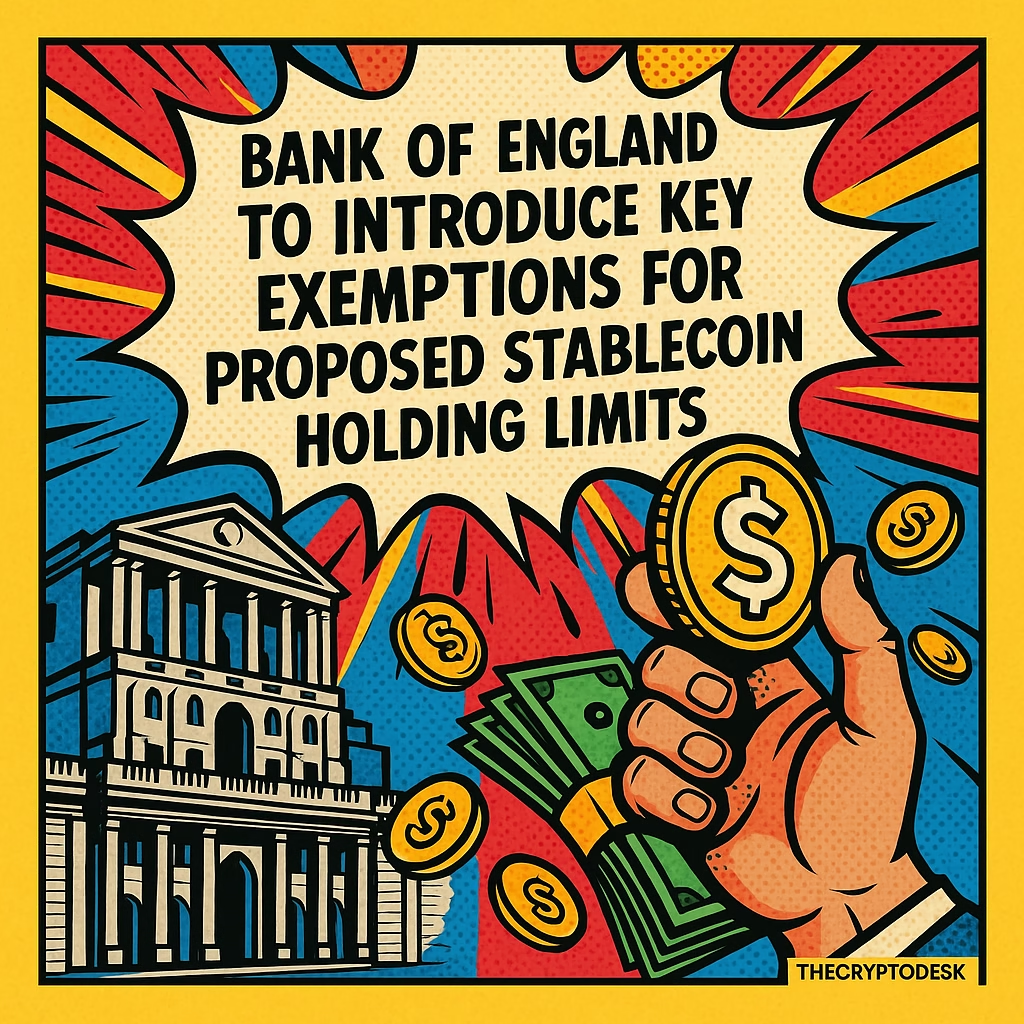The Bank of England is making waves in the cryptocurrency landscape with its recent decision to soften restrictions on stablecoin holdings. In an era where digital assets are becoming essential to global finance, this announcement signals a pivotal shift in the UK’s regulatory approach, as competition with other countries heats up, particularly with the United States.
According to a report from Bloomberg, the central bank intends to issue waivers to specific entities, including cryptocurrency exchanges, which necessitate substantial holdings of stablecoins for operational liquidity and settlement purposes. Additionally, the Bank of England is set to allow the use of stablecoins as settlement assets within its upcoming Digital Securities Sandbox. This innovative environment aims to enable firms to experiment with blockchain-based issuance and trading in a controlled setting.
So, why does this matter? As we witness the rapid evolution of the cryptocurrency industry, the UK must remain competitive. The United States, under the auspices of recent legislation like the Trump administration’s GENIUS Act, is already laying down the groundwork for a more structured approach to dollar-backed stablecoins. Experts fear that if the UK’s regulatory stance remains too rigid, it could drive investment and innovation away from London, potentially shifting the balance of power to New York.
The Bank of England plans to grant exemptions to proposed limits on stablecoin holdings by businesses, indicating a softening stance toward cryptoassets amid growing competition from the US https://t.co/rCaBh2rYA4— Bloomberg (@business) October 7, 2025
At the heart of this discussion are proposed ownership caps suggested by the Bank of England and the Financial Conduct Authority (FCA). Currently, talks are suggesting limits of £20,000 for individuals and £10 million for businesses on systemic stablecoins—those frequently utilized for payments. A detailed consultation paper is expected to be unveiled by the end of this year, outlining these rules and their implications.
Interestingly, Governor Andrew Bailey’s comments earlier this year reflected a longstanding skepticism regarding stablecoins and their potential to undermine public trust in fiat currencies. However, in recent weeks, there’s been a distinct shift in tone. Bailey has acknowledged that stablecoins could spur innovation and coexist alongside traditional financial institutions. This transformation in perspective is crucial, as stablecoins have emerged as a faster and more cost-effective alternative to conventional payment systems.
According to estimates from Bloomberg Intelligence, stablecoins could facilitate over $50 trillion in transactions by 2030. Currently, their global circulation has surged past $300 billion; however, the UK has barely made a dent, with sterling-pegged tokens representing a mere $581,000 compared to €468 million in euro-linked stablecoins, according to DefiLlama. This stark disparity underscores the urgency for the UK to enhance its competitive edge.
As industry sentiment shifts, the Bank of England is taking heed of the calls for a more balanced regulatory approach. Initial measures are reportedly in the works, allowing systemic stablecoins to use high-quality assets like government bonds as backing reserves. This would align UK regulations more closely with those of the US and EU, addressing some industry concerns and paving the way for constructive innovation.
Moreover, the Digital Securities Sandbox will play a significant role in informing the final regulatory framework. Through this initiative, companies will be allowed to utilize regulated stablecoins linked to non-sterling currencies for settlement, providing regulators with critical insights into their efficiency through real-world applications before establishing definitive rules.
While stablecoins currently represent a small fraction of the UK’s financial ecosystem, their rapid growth globally—accelerated by the competitive frameworks established by other countries—is compelling regulators to act expeditiously. For the Bank of England, introducing exemptions may well be the initial stride toward a regulatory environment that balances oversight with the need for innovation in financial technologies.
As the situation evolves, financial experts and the cryptocurrency community alike will be watching closely. Engaging with these developments could set the stage for a more vibrant market for digital assets in the UK, fostering growth and ensuring that Britain remains at the forefront of financial technology. Now is the time for those interested in the cryptocurrency realm—investors, developers, and users alike—to adapt and prepare for the potential transformations ahead.
